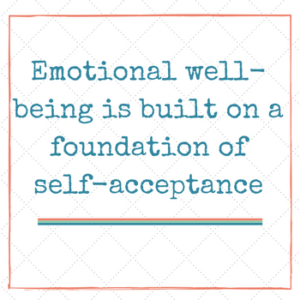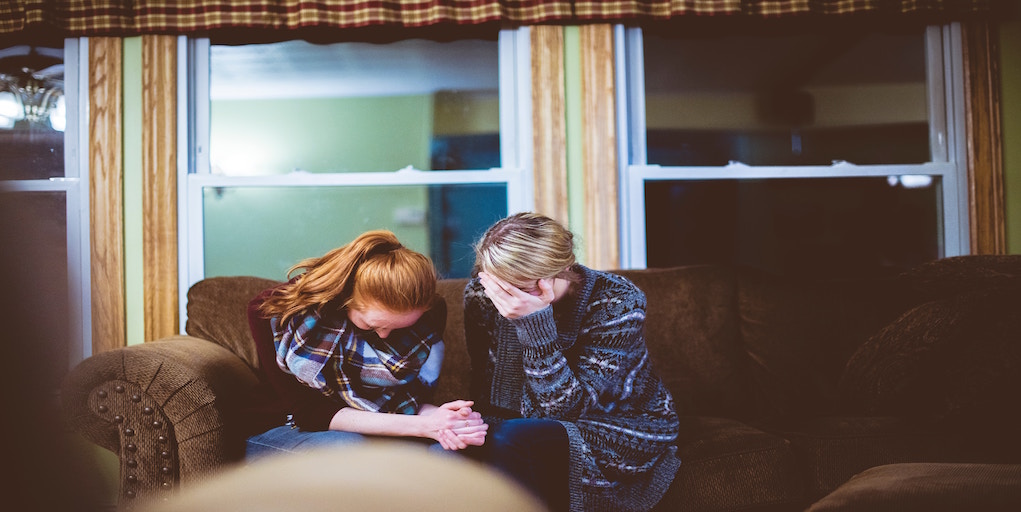Let the journey of self-discovery enrich your life...
It’s probably easier to think about the concept of “acceptance” when it comes to other people, especially those people with whom you’re in a relationship. What may not be as obvious—but what is crucial to effectively and genuinely accepting others—is that the most important form of acceptance is in relationship to yourself: self-acceptance.
You’ve probably heard the adage that you can’t love others if you don’t first love yourself. Why? If you’re harboring inner hatred, it will be hard (or impossible) to put that negative emotion or perception aside to such a degree that you can appreciate and nurture love for someone else.
Our experience of others gets filtered through and shaped by our experience of ourselves.
You can replace the word “love” for “accept” in the adage above and the truth would remain:
“You can’t truly accept others if you don’t first accept yourself.”
(And keep in mind what we’re referring to here isn’t lip-service “acceptance,” or social decorum, or a white-knuckled formality that belies an unchanged inner perception. True self-acceptance is made up of kindness and self-compassion and patience; it gently acknowledges—without harsh or punitive judgment—who you are and where you are at the present moment.)
Self-acceptance is a form of emotional well-being. And it’s key to a healthy relationship with yourself, and therefore, with others.
Our perception of self-acceptance (or self-rejection) begins early on
From a child’s point-of-view, there is no difference between self-acceptance and acceptance of others. When a child is taught to say “I’m sorry” or share her toys, or when the child witnesses gestures of forgiveness and kindness between his caregivers, the child is learning a particular mindset of how people treat one another, and what kinds of interpersonal behaviors are appropriate or desirable.
Children naturally mimic the behavior of others. These “outside” or outward-looking relationships become the foundation of the child’s relationship with him/herself (the “inside” or inward-looking relationship, the relationship with the self).
The young child learns self-acceptance through others’ acceptance of him/her.
The roots of self- and other-criticalness
For example, let’s imagine that a six-year-old child routinely witnesses her mother demean her father. The child picks up on a way of relating that is predicated on hostility and criticalness (without any hint of acceptance in sight).
In this case, the youngster learns that criticalness (and the unwillingness to accept another as s/he is) serves as an appropriate way to react to others. And at the same time, the child is learning how to deal with her own feelings and experiences.
 Let’s assume the wife was critical of her husband because he was upset about an issue at work, an issue that made him tearful and sad. When the wife witnessed her husband’s tearful state, it evoked certain feelings in her (perhaps as a child she witnessed her father teach her brothers that strong men never cry or she was reprimanded for being emotionally vulnerable), feelings that made her uncomfortable and maybe even fearful.
Let’s assume the wife was critical of her husband because he was upset about an issue at work, an issue that made him tearful and sad. When the wife witnessed her husband’s tearful state, it evoked certain feelings in her (perhaps as a child she witnessed her father teach her brothers that strong men never cry or she was reprimanded for being emotionally vulnerable), feelings that made her uncomfortable and maybe even fearful.
Rather than explore those feelings without judgment, the wife’s knee-jerk visceral reaction was to want to escape those feelings (keep in mind this all happens in a split second, at the sub-conscious level), and therefore she came at her husband with anger and hostility. She refused to accept his vulnerable state in the moment, and since his mood disrupted her emotional equilibrium (she could not tolerate her own sadness), she projected anger onto him in the form of what is, essentially, anti-acceptance or rejection.
What we cannot accept in ourselves we cannot accept in others. And the origin of a lack of self-acceptance starts with others reacting negatively to our self-experiences.
If a child is taught (taught by example, which is how our most powerful lessons are learned) that she shouldn’t accept others when they behave in a certain way or feel certain things, she will probably extrapolate that to not accepting herself when she behaves in a certain way or feels certain things.
In that way (perhaps without even hearing the word “self-acceptance”), the youngster learns to withhold acceptance from herself; she starts to block self-acceptance. And it’s much harder to create a fulfilling, balanced, inwardly-harmonious life without self-acceptance than with it.
We are all partly the product of what we’ve learned, by example, as children—but we can learn new ways of being, too.
This look at how our adult emotional reactions in relationship to ourselves and others is not meant to have a period at the end of it, but rather, a comma, or an ellipsis.
For although it’s true we often repeat patterns learned in childhood when we don’t stop to question them, we also have the great and ongoing capacity to question them (and therefore the capacity to change them).
We are not static beings, we are dynamic beings.
Self-reflective moment
The first and most powerful step is to become curious about the particular self-experiences that make you uneasy—experiences that move you into judgement of self and others.
For instance, you might reflect by asking yourself, “Why do I move into anger whenever I feel vulnerable (or experience vulnerability in others)?”
This reflective capacity disrupts knee-jerk criticalness. You will be creating potential moments where self-understanding (and the acceptance that follows) is more likely.
This is a starting place where you can begin to accept yourself for where you are at this moment, and then to go about the gradual process of looking—without rebuke or hostile judgment—at those ingrained patterns.
Some people find they can take that step on their own, others decide to seek guidance and support as they journey toward a deeper sense of wholeness and self-acceptance.
Sometimes it’s good to keep habits we learned from childhood, and sometimes we decide we can let them go and replace them with habits that can benefit us more…like the ongoing habits of self-kindness, self-forgiveness, and self-acceptance.
Here’s to a life filled with greater self-acceptance,
Richard Nicastro, Ph.D.
Licensed Psychologist
(Featured image courtesy of Nenetus at FreeDigitalPhotos.net)









